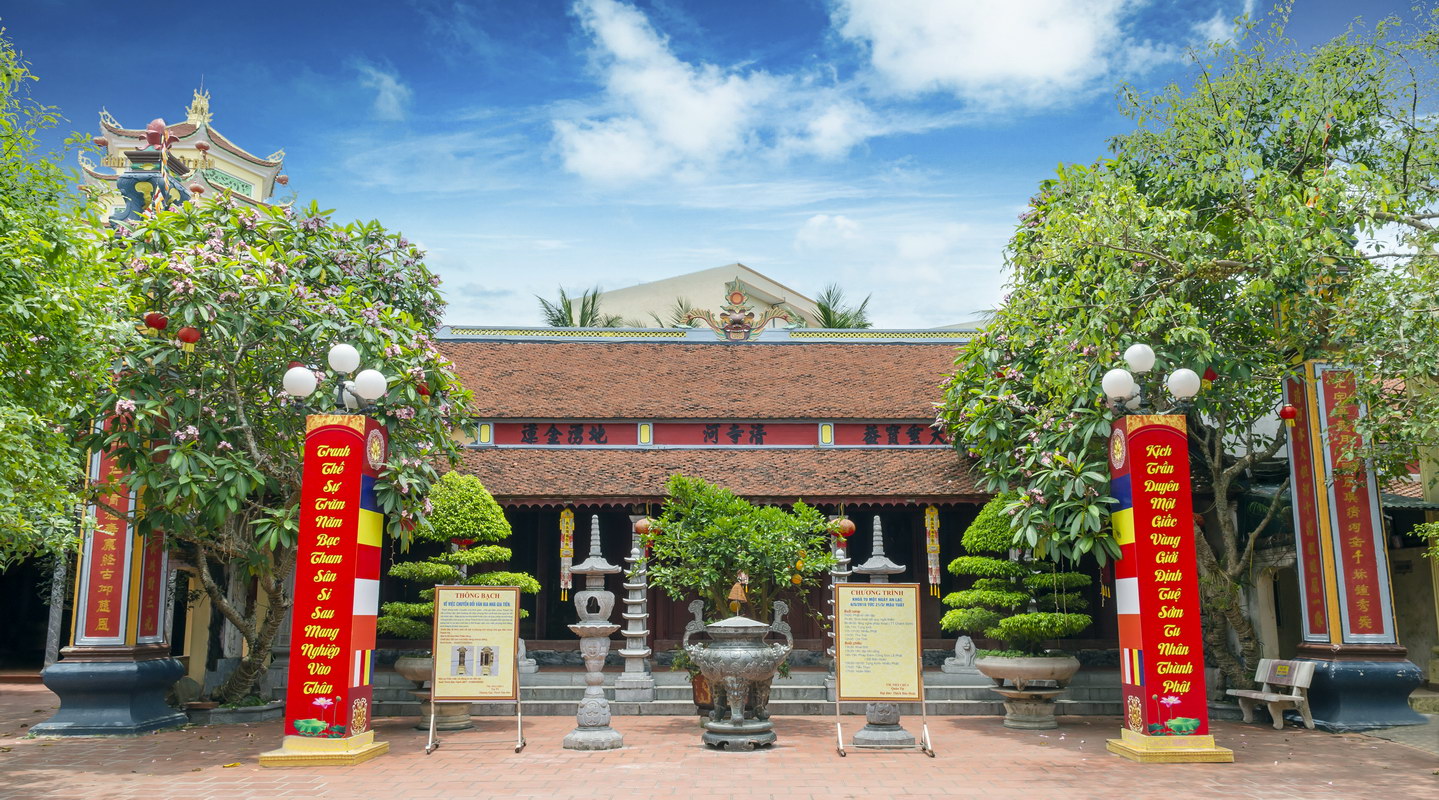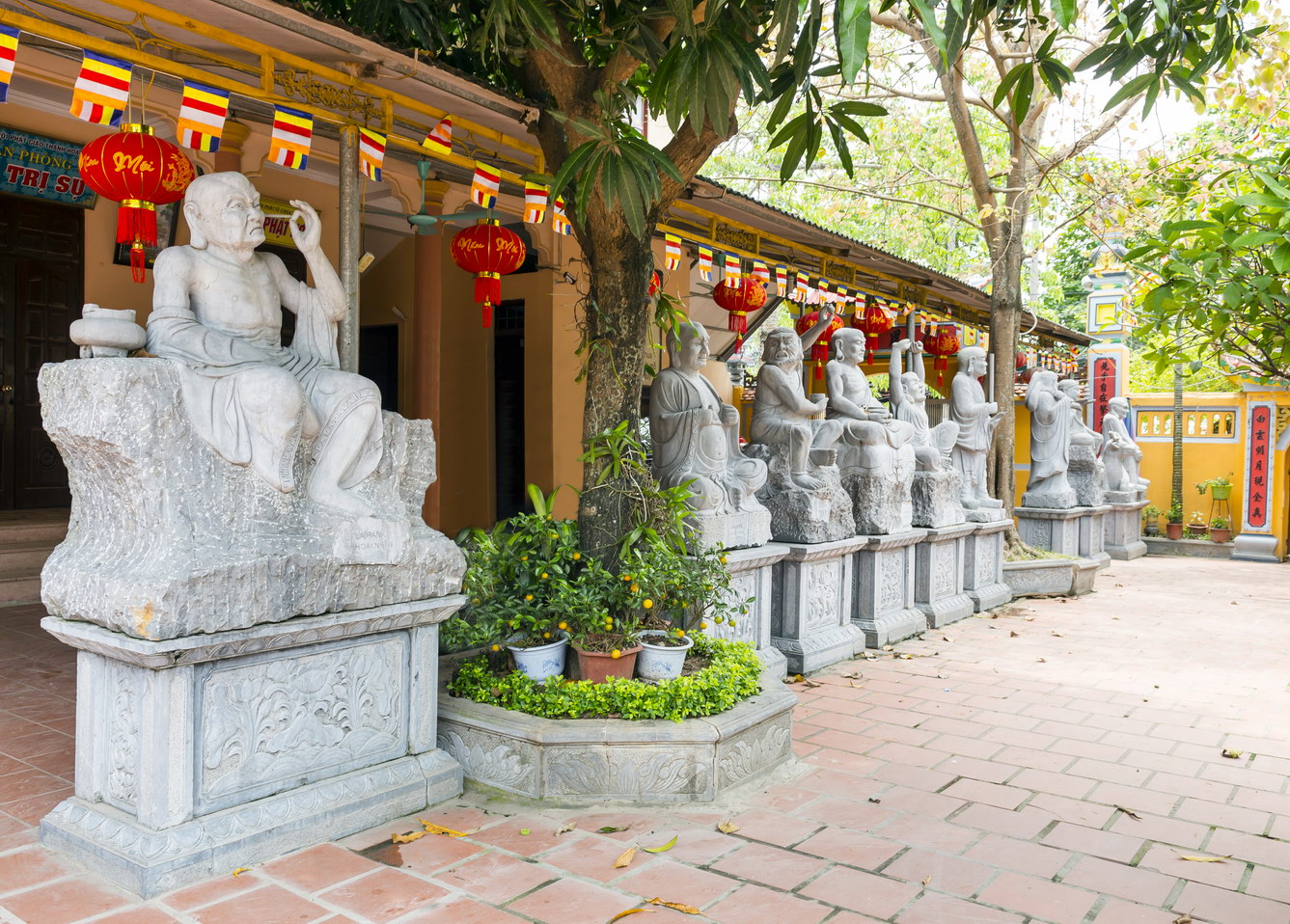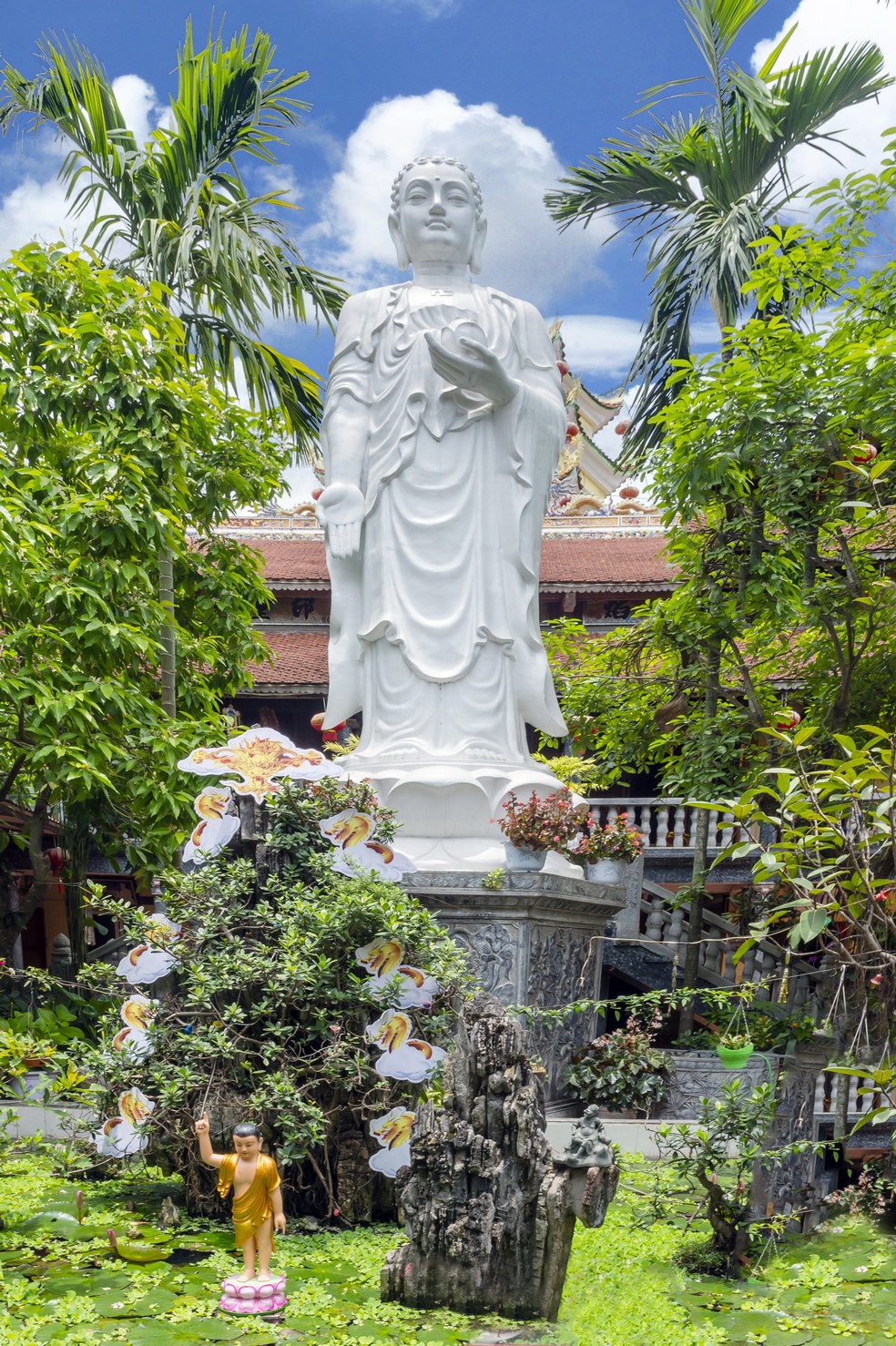Thanh Ha Pagoda
1. Overview
Thanh Ha Pagoda, also known as Truc Lam Ham Rong Zen Monastery, is a prominent and modern spiritual site located in Ham Rong ward, Thanh Hoa City, Thanh Hoa province. Situated near the historic Ham Rong Bridge and overlooking the poetic Ma River, the pagoda offers a peaceful space for Buddhist practice and meditation while also serving as a cultural landmark that reflects the vitality of Vietnamese Buddhism in the modern era.
2. Historical and Cultural Significance
Although Thanh Ha Pagoda is relatively new compared to ancient temples in the region, it holds great importance due to its location and symbolism. It was built as part of the effort to revive and promote the Trúc Lâm Zen sect, a uniquely Vietnamese school of Buddhism founded by King Trần Nhân Tông in the 13th century.
This pagoda stands near Ham Rong Bridge, a strategic point during the Vietnam War that witnessed fierce battles and heroic victories. The placement of a Zen monastery here carries deep spiritual meaning, symbolizing peace rising from conflict, and tranquility returning to a once war-torn land.
The pagoda has quickly become a center of religious activity in Thanh Hoa, attracting monks, nuns, lay practitioners, and visitors from all over the country.
3. Architecture and Design
Thanh Ha Pagoda features traditional Vietnamese Buddhist architecture combined with modern design elements, creating a space that is both sacred and visually impressive. Notable features include:
-
Tam Quan Gate: The three-entrance gate welcoming visitors into a world of spiritual calm.
-
Main Worship Hall: A spacious building with large statues of Shakyamuni Buddha and Bodhisattvas.
-
Bell Tower and Drum Tower: Used in daily rituals and Buddhist ceremonies.
-
Meditation Hall (Thiền đường): A quiet space dedicated to Zen practice.
-
Lotus Pond, gardens, and pavilions: Creating a harmonious atmosphere between nature and architecture.
The pagoda is built with wooden columns, tiled roofs, and detailed carvings, evoking the style of ancient Vietnamese temples while meeting the needs of modern monastic life.
4. How to Get There
Thanh Ha Pagoda is located just about 5 kilometers from the center of Thanh Hoa City. It’s easily accessible by car, motorbike, or even bicycle. The pagoda sits near major landmarks like Ham Rong Bridge and Ma River Park, making it a convenient spiritual stop for both locals and tourists.
5. Festivals and Activities
Though it’s a modern temple, Thanh Ha Pagoda hosts many traditional Buddhist festivals and events:
-
Lunar New Year ceremonies: A time when thousands visit to pray for peace and good luck.
-
Vesak (Buddha’s Birthday): Celebrated with colorful lanterns, flower offerings, and chanting.
-
Vu Lan Festival: Held in the 7th lunar month to honor parents and ancestors.
The pagoda also organizes meditation retreats, Dharma talks, and charity events, making it a vibrant spiritual and community hub.
6. Tips for Visitors
-
Wear respectful, modest clothing.
-
Visit in the early morning or late afternoon for a peaceful experience.
-
Do not disturb monks or meditation practitioners.
-
Take time to enjoy the surrounding views of the Ma River and Ham Rong landscape.
7. Conclusion
Thanh Ha Pagoda is a shining example of modern Vietnamese Buddhism rooted in tradition. With its elegant architecture, peaceful setting, and active spiritual life, it offers both locals and travelers a place for reflection, learning, and connection with the teachings of Zen. Whether you’re on a pilgrimage or simply exploring the cultural richness of Thanh Hoa, Thanh Ha Pagoda is a meaningful and memorable destination.




